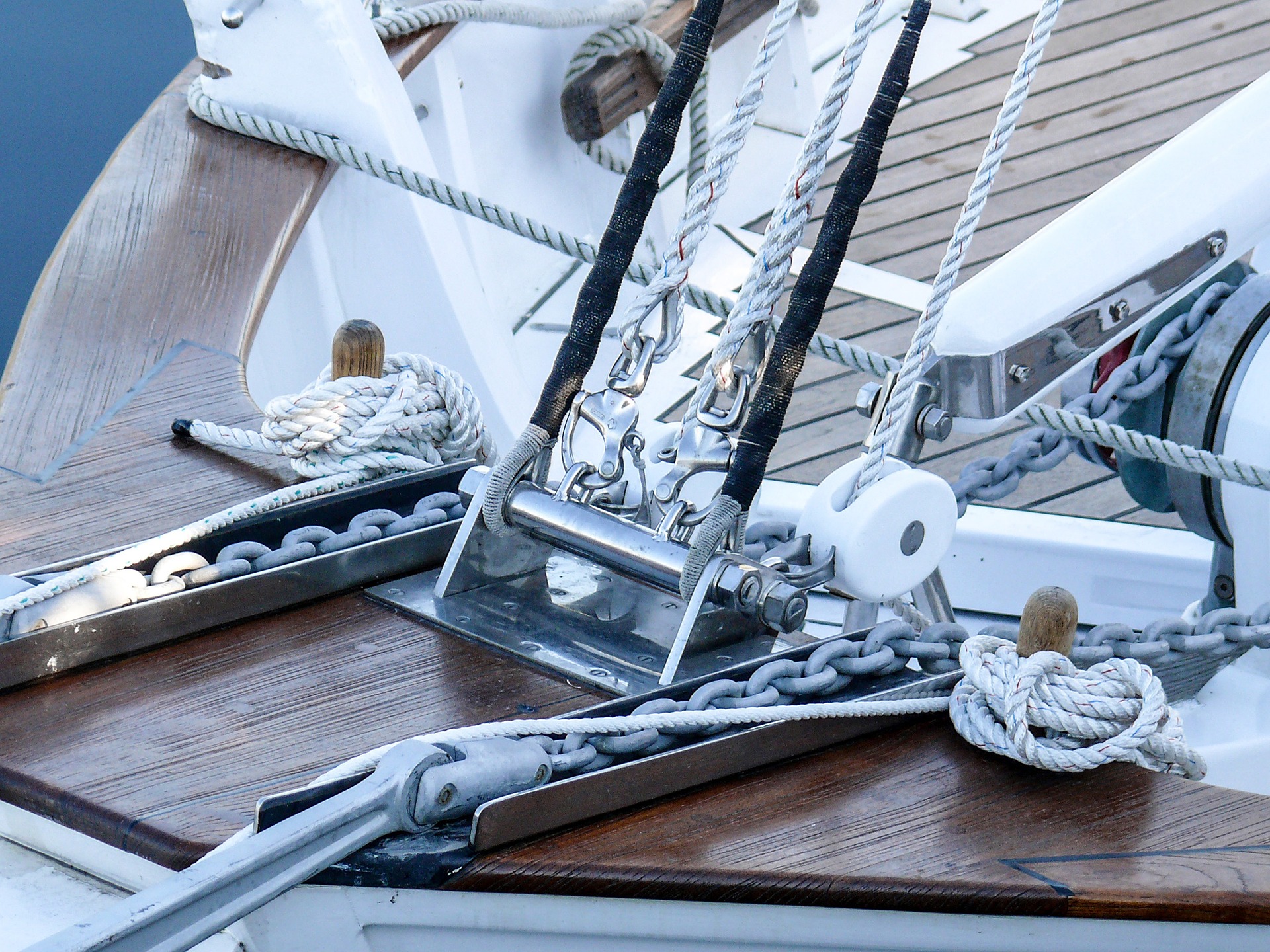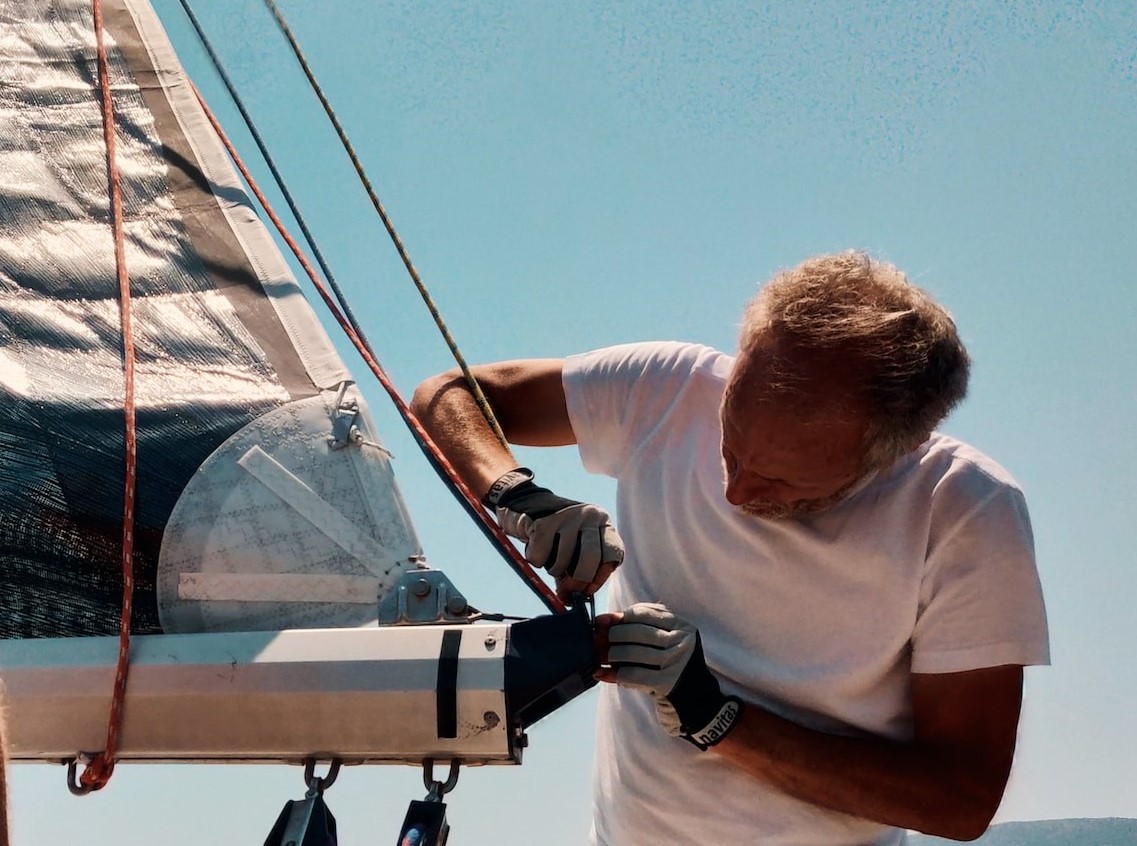

The team of Yasido.com has carefully prepared and systematized for you a glossary with specialized terms used in the world of sailing and maritime activities to help you understand common nautical terminology.
Abeam: The direction perpendicular to the ship's centerline, often used to describe the location of an object or another vessel.
Aboard: The term refers to someone or something being on or within a sailing vessel, such as a sailboat or a ship. It emphasizes the state of being on the vessel or within it, especially when discussing crew members, passengers, equipment, or cargo. It is an essential term for communication and coordination in the maritime world.
Aground: When a vessel is stuck on the bottom of a body of water, typically due to running aground.

Anchor: An anchor is a heavy object, typically made of metal, with a design that allows it to grip the seabed or the bottom of a body of water. Anchors play a crucial role in maritime navigation, allowing ships and boats to secure themselves in a specific location, whether for fishing, mooring, or waiting out adverse weather conditions.
Anchor Line: Anchors are attached to the vessel by an anchor line or chain. The chain is often preferred because it adds weight and helps maintain a horizontal pull on the anchor, improving its holding power.

Anchoring Procedure: To anchor a vessel, the anchor is lowered from the bow (front) of the boat or ship until it reaches the seabed. Then, the vessel slowly moves backward, paying out the anchor line or chain, and allowing the anchor to dig into the bottom. Once the anchor is set securely, the anchor's grip will hold the vessel in place.
Anchor Watch: When at anchor, a designated crew member may keep watch to ensure the anchor is holding and the vessel is not dragging. This is important for safety and to prevent the vessel from drifting into hazards or other vessels.
Ahull: Lying to the wind with no sail set. A heavy-weather tactic, used only when the wind is so strong that no canvas will stand anyway.
Ballast: The weight, typically located in the keel of a sailboat, used to improve stability and performance. Ballast plays a crucial role in preventing the boat from tipping over, especially under the force of wind on the sails.
Bow: It is the forward part of the vessel, typically the pointed or rounded area that cuts through the water as the boat moves forward. Understanding the bow and stern is fundamental in sailing, as directions and instructions on a boat often refer to these parts. For example, if someone on the boat says, "Head to the bow," they are instructing you to go towards the front of the vessel.
Boom: A horizontal spar attached to the foot of the sail. It is an essential part of the rigging system used to extend the foot of the sail and control the angle and shape of the sail. The boom runs horizontally along the bottom of the mainsail, which is the largest sail on most sailboats.

Bilge: The lowest part of the ship's interior where water collects and must be pumped out.
Buoy: A floating object anchored in a body of water to mark a location or indicate navigational hazards. The buoy is a floating object, typically anchored to the bottom of a body of water, that serves various purposes, primarily in navigation, marine safety, and environmental monitoring. Buoys are commonly used in oceans, seas, lakes, and rivers. They come in different shapes, sizes, and colors, each serving a specific function.
Captain: The person in charge of a ship, often called the ship's master.
Chartplotter: The chartplotter on a sailing yacht is a specialized navigational tool used by sailors and boaters to chart their course, track their position, and plan routes on the water. It combines electronic charts and GPS (Global Positioning System) technology to provide real-time information about the yacht's location and surrounding environment.
Cleat: A metal or wood fitting used to secure lines or ropes. Cleats are designed with two horns or projections, allowing sailors to quickly secure a line by looping it around the horns. Cleats are strategically placed on various parts of a boat, such as the deck, cockpit, mast, or boom, and are used for different purposes.
Compass: A navigational instrument that shows the direction relative to the geographic cardinal directions. It is one of the most basic tools used for navigation and orientation and has been used by humans for centuries. At the core of a compass is a magnetic needle, usually a small, lightweight magnet that is free to rotate horizontally.

Crew: The group of people who work on a ship.
Draft: The depth of a ship's keel below the waterline.
Fathom: A unit of measurement equal to six feet, used for measuring water depth.
Fender: A device used to absorb the kinetic energy between the boat and a dock or another vessel during docking or mooring. Fenders are placed between the boat's hull and the docking structure to prevent damage to both the boat and the dock. They act as a protective barrier, absorbing shock and preventing abrasion and impact.
Galley: The ship's kitchen or cooking area.
Helm: The wheel or control used to steer the ship.
Knot: A unit of speed equal to one nautical mile per hour.

Mast: The mast is a fundamental component of a sailboat's rigging system and plays a crucial role in the boat's stability, balance, and propulsion. It is a tall vertical spar that supports the sails. Sails are raised and lowered along the mast using halyards (lines), allowing sailors to control the amount of sail area exposed to the wind.
Nautical mile: A unit of distance used in navigation, equal to one minute of latitude (approximately 1.15 miles or 1.85 kilometers).
Rigging: The system of ropes, cables, and other lines used to support and control the sails and masts of a sailing vessel.

Tack: It refers to both a point of sail (close-hauled tack, reaching tack, running tack) and a maneuver to change the boat's direction by turning it through the wind. Mastering tacking is fundamental for sailors, especially when sailing upwind, as it allows them to navigate effectively against the wind.
Yacht: A recreational boat, often used for sailing or cruising.

Keel: The main structural beam along the bottom of a ship that provides stability.
Lifeboat/liferaft: A lifeboat and a liferaft are both essential safety equipment used on ships and boats to evacuate passengers and crew in the event of an emergency.
Jib: A triangular foresail in front of the mast.
Halyard: A line used to raise or lower a sail.